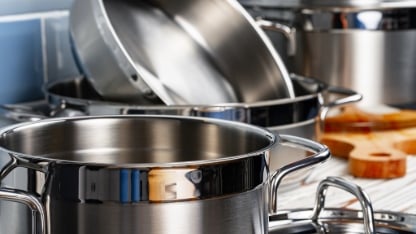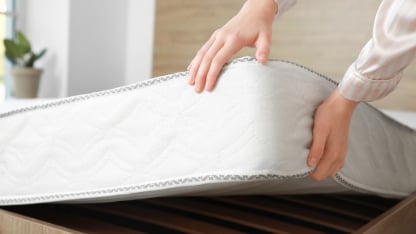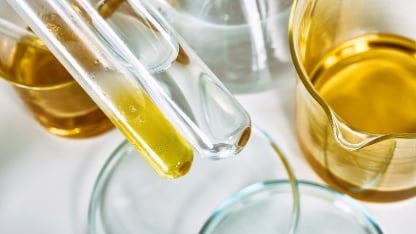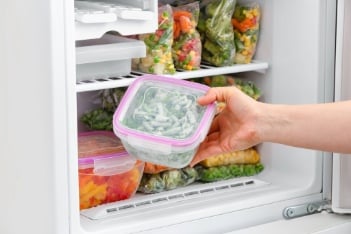Consumer Products Insight Bulletins
As part of our commitment to support and add value to our customers, Intertek regularly publishes and distributes important information about the consumer products industry in the form of our Insight (formerly known as Sparkle) technical bulletins. Insight provides updates on quality and safety requirements of consumer products for every country across the globe. Each Insight includes a detailed synopsis of continually changing standards and how they affect your business, to supply you with the knowledge and potential solutions to stay competitive in today's global marketplace.

Vol. 1480 | 18 Jun 2025
U.S. – April 2025 California Proposition 65 – 60-Day Notices Analysis
In April 2025, California issued 344 Proposition 65 60-day notices, with 46% related to lead, 19% to phthalates, and 35% to other chemicals. Key affected categories include bags, ceramics, beauty products, apparel, and accessories.

Vol. 1479 | 17 Jun 2025
Turkey - New Labeling Requirements for Certain Consumer Products Containing Animal-Origin Parts
Turkey’s new labeling regulation, effective June 9, 2025, mandates disclosure of animal-origin parts in consumer products, requiring clear, Turkish-language information on labels, packaging, and online listings for consumer transparency.

Vol. 1478 | 05 Jun 2025
Indonesia – Approved New Regulations on SNI Compliance for Glazed Ceramics Eating and Drinking Utensils
Indonesia’s Ministry of Industry Regulation No. 14 of 2025 mandates SNI 7275:2022 compliance for glazed ceramic eating and drinking utensils, requiring certification and SNI mark display starting October 25, 2025.

Vol. 1477 | 29 May 2025
U.S. Washington signs a bill concerning amendments to the prohibition of metal cookware
Washington State’s SB 5628, effective July 27, 2025, sets phased lead limits for aluminium and brass cookware and utensils—90 ppm from 2026 and 10 ppm from 2028—strengthening consumer protection against lead exposure.

Vol. 1476 | 14 May 2025
EPA Further Delays PFAS Reporting Deadline Under TSCA
The EPA delays PFAS reporting under TSCA to April 2026 due to electronic system development and potential rule revisions. Public comments are open until June 12, 2025, offering stakeholders a chance to influence future requirements.

Vol. 1475 | 07 May 2025
UK Published the Amendments to The Regulations On The Fire Safety of Furniture
The UK’s 2025 amendments to Furniture and Furnishings (Fire) (Safety) Regulations exempt certain children’s products, remove display label requirements, and extend prosecution periods, effective October 30, 2025, maintaining key fire safety standards.

Vol. 1474 | 04 May 2025
EU - Update on Targeted PFAS Analysis EN 17681-1:2025
The EU’s EN 17681-1:2025 standard updates targeted PFAS testing in textiles using alkaline hydrolysis, enhancing detection of side-chain fluorinated polymers and requiring companies selling in Europe to adopt the new method for compliance.

Vol. 1473 | 04 May 2025
EU Reached a Provisional Agreement On New EU Toy Safety Regulations
The EU’s provisional agreement on new toy safety regulations bans harmful chemicals like PFAS, mandates safety assessments, and requires Digital Product Passports for all toys to improve child protection and market transparency.

Vol. 1472 | 27 Apr 2025
U.S. – March 2025 California Proposition 65 – 60-Day Notices Analysis
In March 2025, California issued 358 Proposition 65 60-day notices for Lead, Phthalates, and other chemicals in products ranging from apparel to beauty and pet products, highlighting ongoing compliance challenges.

Vol. 1471 | 27 Apr 2025
Indonesia – Approved New Regulations on SNI Compliance for Paper and Cardboard Food Packaging
Indonesia’s Regulation No. 6 of 2025 requires mandatory SNI 8218:2024 compliance and certification for paper and cardboard materials used in primary food packaging, effective July 2025 with full compliance by July 2026.

Vol. 1470 | 22 Apr 2025
EU Adopts 2025 - 2030 Working Plan to Drive Sustainability in Textiles
The EU’s 2025-2030 ESPR Working Plan prioritizes textiles to enhance sustainability through durability, repairability, material efficiency, and transparency, with delegated acts set for adoption in 2027 to foster a circular textile economy.

Vol. 1469 | 22 Apr 2025
U.S. CPSC revised the Safety Standard Stationary Activity Centers
The U.S. CPSC revises the Stationary Activity Centers safety standard by adopting ASTM F2012-24, effective July 5, 2025, enhancing warning label permanency testing and adding new label examples.

Vol. 1468 | 21 Apr 2025
U.S. - Utah R70-101: Online Requirements removed
Utah updates rule R70-101 to remove online digital labeling requirements for bedding, upholstered furniture, and quilted clothing effective April 9, 2025, maintaining physical labeling and licensing regulations.

Vol. 1467 | 14 Apr 2025
EU Approves New Regulation to Amend the Regulations of Plastic Materials for Food Contact
The EU’s Regulation 2025/351 updates plastic food contact material rules, enforcing stricter purity, labelling, and recycled plastic standards to enhance consumer safety and sustainability, effective March 16, 2025.